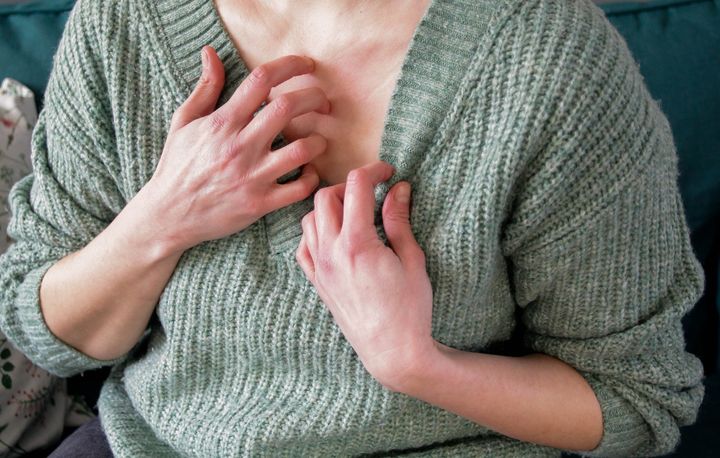
ITV’s This Morning’s host Holly Willoughby has announced that she has caught shingles.“Hi, just to let you know, I may be away for the rest of the week as I have shingles,” she wrote on her Instagram story on Sunday 16th of April.
Shingles, also known as herpes zoster, it’s a viral infection that causes a painful rash. It sounds like a serious infection so should we be worried? What happens if we catch the infection? Duncan Reid, Pharmacist at Pharmacy2U has all the answers.
What are shingles and how is it caught?
“It is caused by the varicella-zoster virus, the same virus that causes chickenpox,” Reid tells HuffPost UK.
After a person has caught chickenpox, the virus stays dormant in the nervous system and can reactivate later in life which causes shingles. “Shingles is most common in older adults and people with weakened immune systems. Most people develop chickenpox in childhood, and the varicella-zoster virus remains dormant (inactive) in the nervous system.,” Reid explains.
However, Reid says it’s not clear why the virus can be reactivated at a later stage in life causing shingles.
“It is believed in most cases to be due to factors that weaken the immune system, such as old age, physical or emotional stress, HIV/AIDS, recent bone or organ transplant, or chemotherapy. But even young, healthy individuals can develop shingles.”
Reid emphasises that you can’t catch shingles from someone who has shingles or chicken pox. But if you’ve never had chickenpox before you can catch chickenpox from someone who has shingles.
“The blisters that develop as part of shingles contain the live virus, so if someone who has not had chickenpox before comes into contact with them, they can catch chickenpox,” he adds.
What are the symptoms?
Shingles cause a painful rash on one side of the body, like on the chest, belly, or face. “The pain may be a constant, dull or burning sensation and the affected area of skin will usually be tender,” Reid says.
Shingles often starts with a tingly feeling, headache, or feeling sick. “Then, a rash appears within a few days, which can be itchy and look like chickenpox. The rash turns into blisters that may pop and form scabs before healing,” he adds.
Reid continues: “Although the rash goes away in a few weeks, some people may still feel pain or discomfort in that area even after the rash has healed.”
Once symptoms have passed, the virus will remain dormant in the body, kept in check by the immune system.
“However, if the immune system becomes compromised again, the virus can reactivate and cause symptoms to recur.”
This is why it’s important to maintain a healthy lifestyle, including a balanced diet, regular exercise, and quality sleep, to support the immune system to limit the risk of shingles recurring.
How is it treated?
Currently, there is no cure for shingles but there are treatments available to help manage symptoms and relieve pain. Shingles typically last around two to four weeks, with pain sometimes lasting longer.
“There are several treatments available for shingles, including taking painkillers such as paracetamol, ibuprofen or codeine, to ease pain,” Reid says.
He also suggests keeping the rash clean and dry to reduce the risk of infection. “Loose-fitting clothing should be worn, and the rash should be covered to reduce the risk of the infection being passed on to someone else. It’s important not to stick any plaster or dressing to the rash,” he adds.
If the blisters are wet using a cool compress, such as a cloth or flannel cooled with tap water, for up to 20 minutes, a few times a day can also help to soothe the skin.
“In some cases, a doctor may prescribe a course of antiviral medication lasting seven to ten days,” Reid says.
He goes on to say that “It’s important to note that these treatments will not kill the virus, but they can help to stop it from multiplying. This can help to reduce the severity and duration of the symptoms.”
If you find yourself experiencing symptoms of shingles, a pharmacist can advise you on the best treatment and can refer you to your GP if necessary.
“Remember to take precautions to prevent the spread of the virus to others and to avoid activities that may aggravate your symptoms,” Reid says.
Managing your symptoms and seeking appropriate treatment can help speed up the recovery process.
“If you are between the ages of 70-79 there is a shingles vaccine available on the NHS – your GP will be able to provide further information on this,” Reid says.